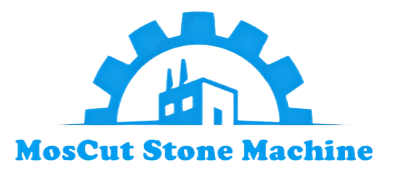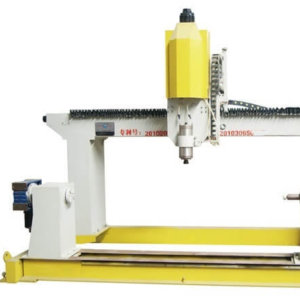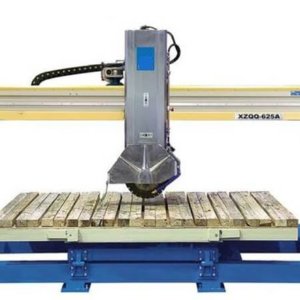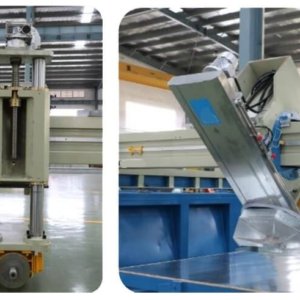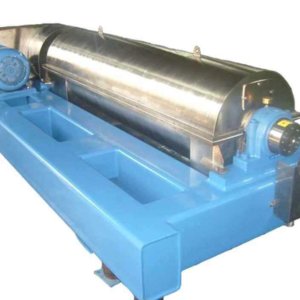1. Introduce of Granite Cutting Machine
2. Granite Cutting Optimization
3. Features of Granite Cutting Machine
4. Granite Cutting Machine Edge Profiling Functions
5. Details of Granite Cutting Machine
6. Specifications of Granite Cutting Machine
7. Granite Cutting Machine Working Video
Introduce of Granite Cutting Machine
Granite cutting machine is also named granite cutter.It is a machine designed for granite cutting. As we know,granite material is harder than marble material and other stone material. So a granite cutting machine should be more stronger in order to cut granite materials. In this case,we need a stable and strong cutting motor, cutting blades and other parts. Actually, this machine can be used as marble cutting machine also. Use this granite cutting machine to make precision cuts in marble, granite,quartz materials up to 10cm thick. This granite cutting machine features an adjustable cutting depth and is ideal for cutting both marble and granite.
Granite Cutting Optimization:
To maximize efficiency and material utilization, granite cutting machines often incorporate cutting optimization software. This software analyzes the dimensions of the stone slabs and generates cutting plans to minimize waste. By positioning multiple pieces on a single slab, operators can achieve higher productivity and reduce material costs. Cutting optimization is a critical aspect of granite cutting machine operations that aims to maximize material utilization, minimize waste, and optimize cutting efficiency. By employing cutting optimization techniques, fabricators can reduce material costs, enhance productivity, and improve overall workflow. Here are some key points related to granite cutting optimization in the context of granite cutting machines:
1. Nesting:
Nesting refers to the arrangement of individual shapes or parts to be cut within a given slab or sheet of material. The goal of nesting is to maximize material usage by efficiently positioning the parts in a way that minimizes waste. Advanced nesting software can analyze the dimensions and shapes of the required parts and automatically generate the most optimized nesting patterns. Nesting algorithms take into account factors like material size, grain direction, and part orientation to achieve the best possible material utilization.
2. Software Solutions:
Granite Cutting optimization is typically facilitated by specialized software programs specifically designed for this purpose. These software solutions take into account various parameters such as material dimensions, cutting restrictions, and desired output to generate optimized cutting plans. They can handle complex cutting scenarios and provide visual representations of the optimized layout, making it easier for operators to follow and execute the cutting process accurately.
3. Material Optimization:
Optimizing the cutting process involves finding the best way to cut the material to minimize waste. This can include techniques such as repositioning the material during cutting, optimizing the cutting path, or employing specific cutting patterns to maximize material utilization. By strategically planning the cutting sequence and minimizing the number of required cuts, fabricators can reduce material waste and increase overall efficiency.
4. Automated Optimization:
Modern granite cutting machines often come equipped with automated optimization capabilities. These machines can be integrated with cutting optimization software and computerized control systems. The software analyzes the input parameters, such as material dimensions, cutting requirements, and available stock, and generates optimized cutting plans automatically. The machine then follows these plans, executing precise cuts while minimizing waste.
5. Advanced Cutting Features:
Granite cutting machines with advanced features can contribute to cutting optimization. For example, machines equipped with cameras and laser alignment systems can accurately identify the position and orientation of the material, allowing for precise and optimized cutting. Additionally, granite cutting machines with rotating or tilting capabilities can perform complex cuts and bevels, further enhancing material utilization.
6. Continuous Improvement:
Cutting optimization is an ongoing process that requires continuous evaluation and improvement. Fabricators should analyze the results of their cutting operations, identify areas for optimization, and make adjustments accordingly. By monitoring and fine-tuning the cutting processes, fabricators can achieve better material utilization, increased productivity, and reduced waste over time.
7. Waste Management:
Proper waste management is an essential aspect of cutting optimization. Fabricators should have efficient systems in place to handle and dispose of waste material generated during the cutting process. Recycling or repurposing leftover material can help minimize environmental impact and potentially reduce costs associated with waste disposal.
Cutting optimization is a vital practice in the granite cutting machine industry. By maximizing material utilization and reducing waste, fabricators can achieve cost savings, improve productivity, and enhance the sustainability of their operations. The integration of advanced software solutions, automated optimization features, and continuous improvement efforts contribute to efficient cutting processes and optimal material usage.

Features of Granite Cutting Machine
We are professional supplier of granite cutting machine and bridge saw machine at a very affordadble price,we also provide full set of after sale services like technical support,machine set up,parts replacement etc. This Granite cutting machine is designed with a hydraulic lifting system on the main bridge part, all of the electric parts and components come from top brand and best quality. Thanks to our carefully production, this Granite Cutting machine is very precision cutting and stable working and easy operation.
Granite Cutting Machine Edge Profiling Functions:
Some advanced granite cutting machines offer edge profiling capabilities. These machines can shape the edges of stone slabs with different profiles, such as bullnose, bevel, or ogee. This feature eliminates the need for additional profiling machinery, streamlining the fabrication process and saving time.
Edge profiling is a process commonly performed using a granite cutting machine to shape and polish the edges of stone slabs or other materials. It adds decorative and functional elements to the cut pieces, enhancing their aesthetic appeal and usability. Here are some key points related to edge profiling:
1. Edge Profiles:
Edge profiles refer to the various shapes and designs that can be applied to the edges of stone slabs. There are numerous edge profile options available, ranging from simple and straight designs to more intricate and decorative profiles. Some common edge profiles include straight, beveled, bullnose, ogee, waterfall, half-bullnose, and eased edge.
2. Shaping Process:
The edge profiling process involves using the granite cutting machine to shape the edges of the material according to the desired profile. The machine is equipped with specialized diamond tools, such as profiling wheels or router bits, that are designed to cut and shape the edges accurately. The operator sets the machine to the desired profile, and the cutting head moves along the material’s edge, gradually shaping it to the specified design.
3. Polishing Process:
Once the edge is shaped, the polishing process follows to achieve a smooth and glossy finish. Polishing is typically done using progressively finer grit diamond abrasives, which are applied to the edge of the material. The granite cutting machine’s polishing tools rotate against the edge, smoothing the surface and creating a polished finish. This process may involve multiple passes with different grit levels to achieve the desired level of shine and smoothness.
4. Customization and Personalization:
Edge profiling allows for customization and personalization of stone products. By selecting different edge profiles, customers can tailor the appearance of their countertops, vanity tops, table edges, or other applications to suit their design preferences. Edge profiling can complement the overall aesthetic of a space, adding elegance, style, and uniqueness to the finished product.
5. Functional Considerations:
Beyond aesthetics, edge profiling also serves functional purposes. For instance, certain edge profiles, such as a bullnose or eased edge, provide a safer and more comfortable edge for handling and minimize the risk of injury from sharp edges. The choice of edge profile may also depend on the intended application and specific functional requirements.
6. Machine Capabilities:
The granite cutting machine used for edge profiling should be equipped with appropriate tools and features to accommodate the profiling process. This may include specific profiling wheels or router bits, as well as the ability to control the speed and pressure of the cutting and polishing operations. The machine should provide stability and precision to ensure accurate profiling results.
7. Quality Control:
Achieving consistent and high-quality edge profiles requires proper quality control measures. Fabricators should inspect the edges of the cut pieces to ensure that they meet the desired profile specifications. Any imperfections or inconsistencies should be addressed through adjustments or refinements to maintain the desired level of quality.
Edge profiling is a valuable process in the granite cutting machine industry, allowing for the customization, enhancement, and refinement of stone and other materials. It adds a finishing touch to the cut pieces, elevating their appearance, functionality, and value. By offering a variety of edge profiles and ensuring precise execution, fabricators can meet the unique preferences and requirements of their customers while delivering superior-quality finished products.
Details of Granite Cutting Machine







Specifications of Granite Cutting Machine
| Item Name | Unit | Value |
|---|---|---|
| Blade Diameter | mm | 600 |
| Horizontal Travel | mm | 3200 |
| Longitudinal Travel | mm | 3200 |
| Vertical Travel | mm | 300 |
| Main Motor | KW | 18.5 |
| Total Power | KW | 21.5 |
| Size of table | mm | 3200*2000 |
| Table Rotation | n° | 90 |
| Machine overall | mm | 6000*5000*2800 |
| Weight | T | 5.6 |
